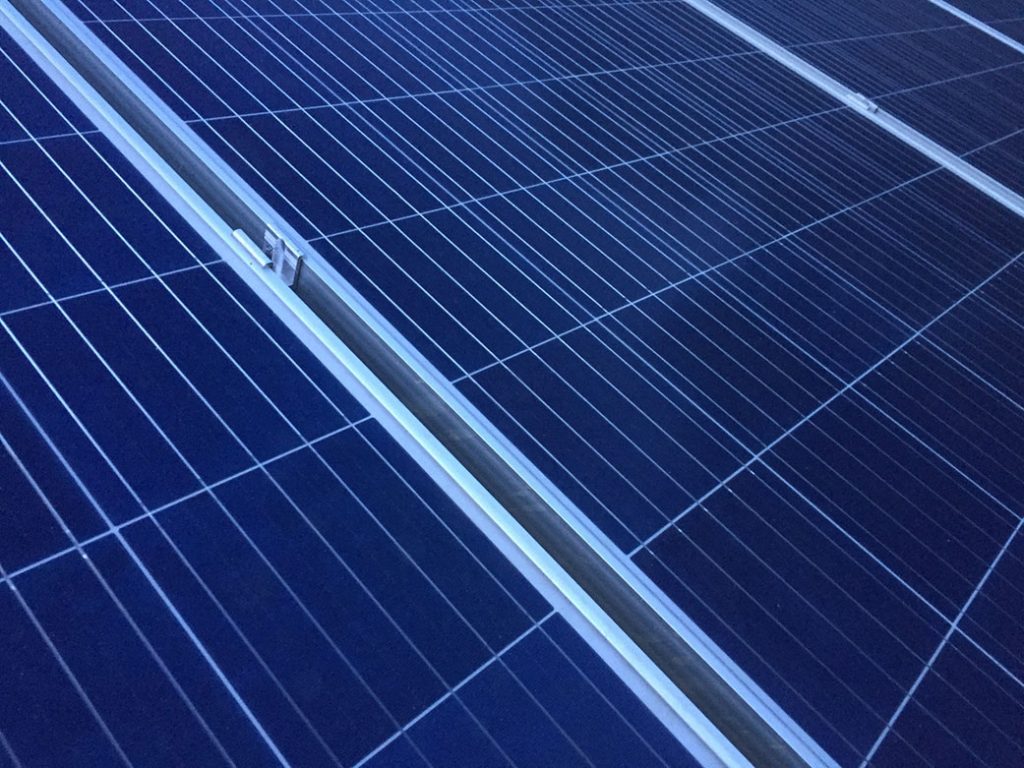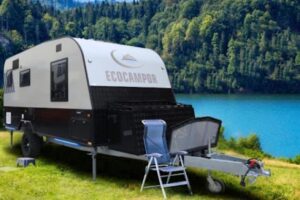It comes down to accessibility. Recent advancements in solar technology have lowered the prices of solar panels and solar kits. This in turn has increased the number of people who can afford to install an RV solar system.
Keep on reading if you’re curious about what it might take to incorporate solar power into your RV’s power system.
Why You Should Want Solar
There’s one major advantage to having solar that I think should be motivation enough to pursue investing in a solar system: not ending up “dead in the water”.
Being dead in the water is a mariner’s term that applies to RVs quite well. It essentially means that your RV has become totally inoperable and unable to move. Almost all dead in the water situations are caused by someone accidently allowing their RV batteries to fully discharge.

Theoretically your RV’s cranking battery (the one that starts your engine) will still have juice and be able to start your rig up and charge your auxiliary batteries (the ones in your RV battery bank). But in the case that both your cranking and auxiliary batteries are drained, you’ll be out of luck.
Solar power to the rescue!
With access to a solar system, dead in the water situations can almost always be avoided. If you do happen to completely drain all of your batteries, all you’ll have to do is wait a few daylight hours and allow your solar panels to recharge your battery bank. Pretty nifty, huh?
RV Batteries
Before I get too ahead of myself and start talking all about charging your RV batteries, I’m going to first just talk about RV batteries in general, the two types you’ll likely encounter, and the pros and cons to each.
RV’s utilize what are known as deep-cycle batteries. Deep-cycle batteries are specifically designed to be deeply discharged on a regular basis without damaging the battery or shortening its lifespan.
Deep-cycle batteries are different from the type of battery you have in the engine compartment of your car-often referred to as a cranking battery. Whereas cranking batteries are designed to deliver the short, powerful burst of energy required to start a car, deep-cycle batteries release lower, slower amounts of energy in order to power appliances in your RV (or boat).
Lead-Acid
Lead-acid batteries are the most common form of rechargeable battery used in automobiles and RVs. They use lead plates submerged in an electrolyte to store a charge and power your RV. It is recommended that lead-acid batteries be discharged to around 50% of their power capacity in order to preserve the life span of the battery.
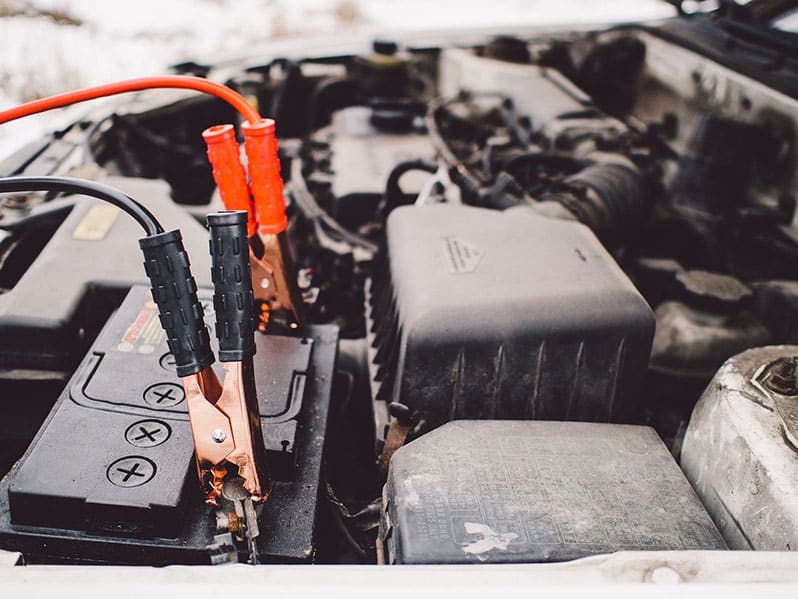
Pros
Some pros to lead-acid batteries are that they are relatively cheap…and in my opinion that’s about it.
Cons
Some cons to lead-acid batteries is that they can only be discharged to 50%, they don’t have a great weight to power-stored ratio (energy-density) , and are dangerous to handle when damaged.
Lithium Iron Phosphate
Lithium batteries are the hot new kid on the battery market. They utilize lithium iron phosphate in order to store energy and can be discharged to as low as 20% of their total power capacity without shortening their lifespan.
Pros
Lithium batteries have a lot of pros when compared to their lead-acid forefathers. They can be discharged further than lead-acid, have a greater energy-density (so you get more energy storage per pound), maintain a higher voltage while discharging, and have a longer lifespan.
Cons
The big drawback to lithium iron phosphate batteries is their initial cost upfront. The price tag alone is usually enough to deter folks from investing in them. But that’s the thing, they are an investment. In the long run, they will outperform lead-acid batteries and end up saving you money.
Do what you will with this information, but personally, I would always splurge on the lithium batteries when investing in a solid electrical system for my RV.
Setting Up a Solar System
There are two routes you can take when setting up a solar power system in your rig:
- Install solar panels and connect them to your battery bank
- Purchase a portable solar panel kit, also known as a solar generator
For both of these options, you’ll need to know how many panels will be required to satisfy your power needs. Every camper is going to consume different amounts of energy, depending upon what appliances they like to use when camping, and how often they are using these appliances.
Some appliances that consume a lot of power:
- Microwaves
- Air conditioners
- Electric stove tops
- Water pumps
- Water heaters
- Refrigerators
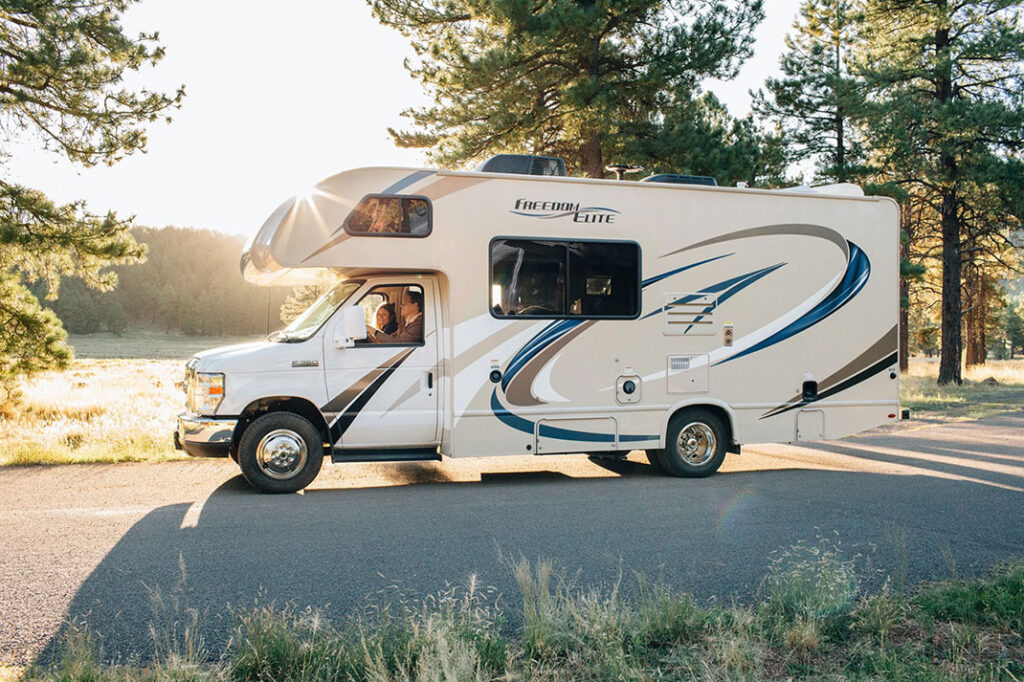
Not everyone is going to have these appliances. Folks with tiny teardrop trailers will probably have the smallest power consumption of all, as they will most likely only be powering some lights and maybe charging a phone or laptop.
On the other hand, big motorhomes often come with all of the bells and whistles and typically come stock with all of the above appliances and more. When in full swing, these RV beasts will consume as much power as you can supply them.
So how do you go about figuring out how much power you will be consuming and how many panels you will need? I can’t get into that today, but check out this article I recently wrote that will walk you through the whole process.
Solar Generators
A solar generator consists of lightweight, portable solar panels, and a battery unit that typically also features a charge controller, power inverter, and several outlets and USB ports.
I would suggest purchasing one of these devices if you plan on boondocking in a towable trailer like one of these sweet expedition trailers. Without ample roof space to install permanent solar panels, a portable solar unit will be your best option for solar power.

These units allow you to collect solar energy through the solar panels, and store that energy in the lithium battery. Once power is collected and stored, it can be utilized in a number of ways. You can charge devices such as laptops and cell phones, power appliances like space heaters and stereos, and directly charge your RV’s battery bank.
Portable solar units such as solar generators have not always been feasible power solutions for RVers. Only in recent years has the technology become lightweight enough for folks to begin using them as a convenient source of power in their rigs.
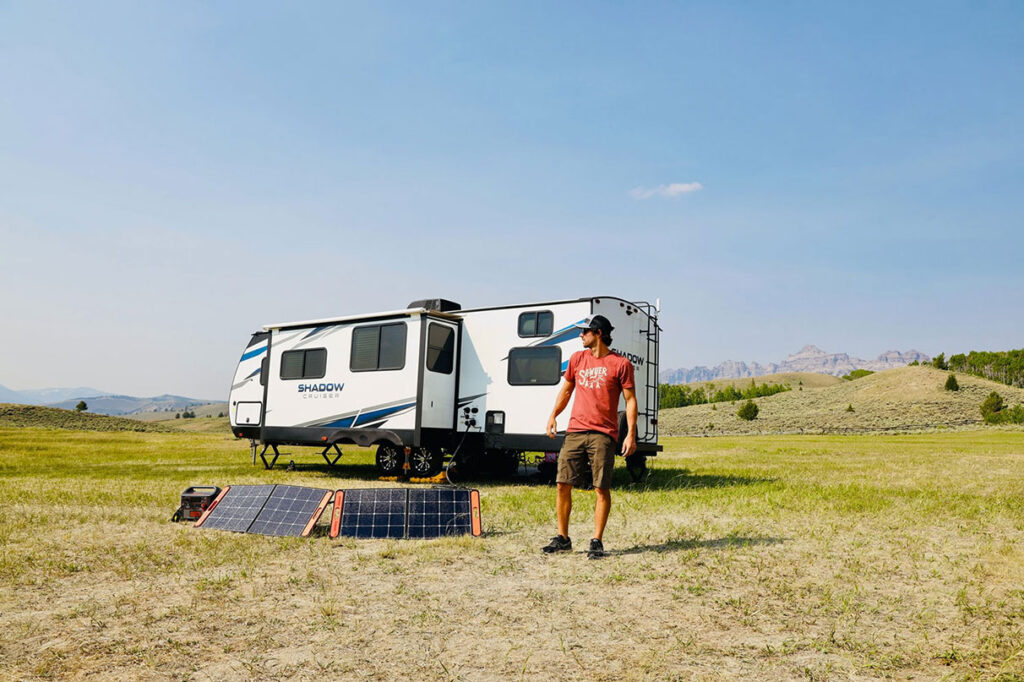
But how does one go about charging their RV batteries using a solar generator? The simplest way to achieve this is to plug your RV into the solar generator via the shore power connection, the same way you would charge an RV from your house.
Once the RV is connected to the generator, it will immediately begin charging the RV’s batteries. If you plan on using a solar generator in this way, it is recommended that your generator unit have a built-in 1000-watt inverter.
Please note that this is not the most efficient way to charge your RV batteries, and is considered somewhat convoluted to some RVers. This is because you’ll be converting DC power to AC power in the solar unit, and then AC back to DC using the RV’s inverter.
Permanently Installed Solar Panels
The most popular route for incorporating solar power into your RV’s power system is to permanently install residential solar panels onto your rig and wire them into your electrical system.
By “residential” solar panels, I am referring to the same types of panels that can be installed on a home or structure in order to provide supplemental power to that building.
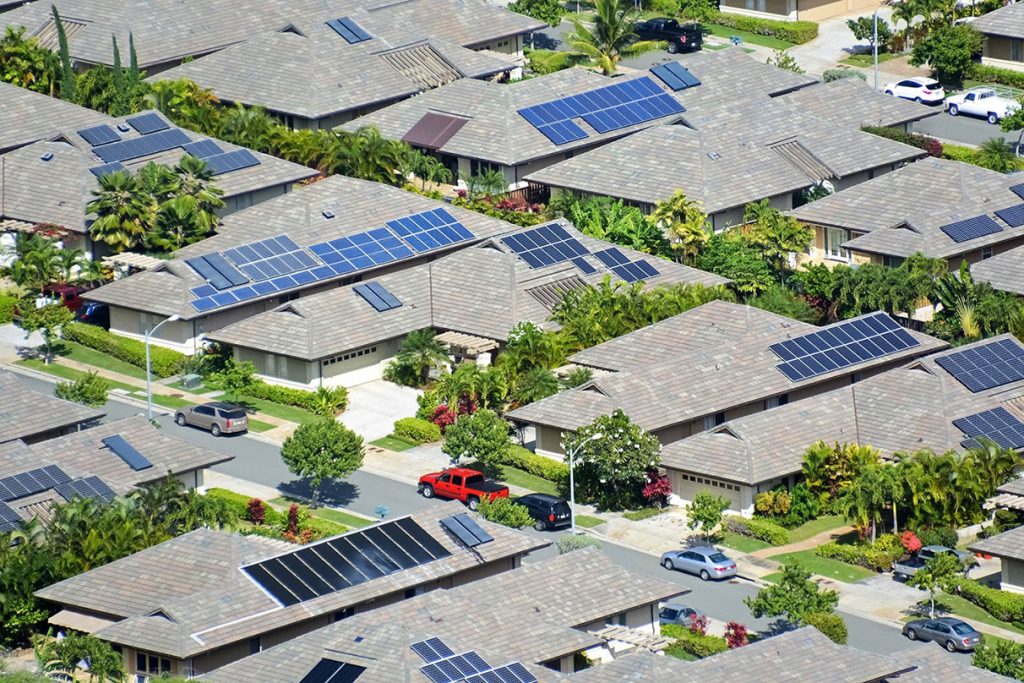
A couple decades ago, you wouldn’t be seeing too many solar panels installed on motorhomes and towable travel trailers. But as advancements have been made in the realm of residential solar power, the RV world has benefited, and it is now cheaper and easier than ever to buy solar panels for an RV.
In my opinion, this has been accelerated by the “van life” movement. As more people choose to travel and work out of converted vans, the demand for solar technology on the consumer level has risen. Luckily the solar market has figured out how to accommodate the ravenous demand for these solar kits.
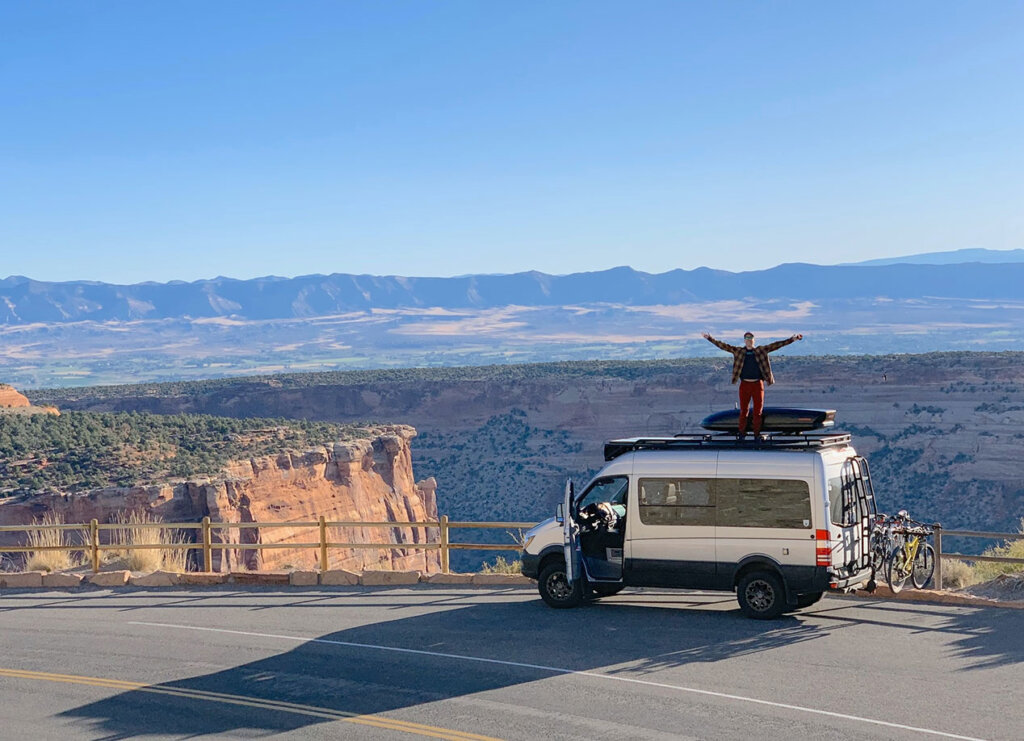
To set up a permanent solar power system on your rig, you are going to need a few key components:
- Solar panel
- Charge controller
- Deep cycle batteries
- Inverter (not strictly necessary but highly recommended)
- Photovoltaic wire
Once the panels are installed on your rig, the process of connecting them to your battery is actually fairly simple.
(Psst… if you don’t know how to install panels on your RV roof, click here to find out.)
First, install your charge controller on your electrical control panel. Having close proximity between your charge controller, inverter, and batteries will make the installation process easier and allow you to use less wire overall.
Once the controller is in place, run the photovoltaic wires coming off of your solar panels into your rig. Connect them into the appropriate ports on the charge controller. This will be the only place you will need to use the photovoltaic wire.
Once the controller is connected to the panels, run a positive and a negative wire from the controller to the battery and you’re all set! Now your panels will be able to charge your batteries, and your batteries will, in turn, supply that power to your DC fuse block.
If you want to be able to run high power-draw appliances, and supply power to regular outlets, you will also need to connect your battery to an inverter, which will convert the 12-volt DC power to 120-volt AC power—the type that runs appliances like air conditioners and microwaves.
Unless you are building a system from scratch, it is likely you will already have an inverter installed and ready to use in your system.
Some of us are visual learners, and that’s OK! Check out this great video by the YouTube channel ShopSolarKits. They created this video for beginners and explain the process using very basic terminology.
The video describes the wiring process for a 100 watt solar panel, but the same basic principles apply to larger solar setups.
A Word of Warning
If you are on a tight budget, it may be tempting to save money on system components by skipping the charge controller and connecting your panels directly to your RV batteries. Will this charge the battery? Yes! Should you do it? NO!
Connecting the solar panels directly to your batteries puts you at risk of encountering two undesirable situations:
- Unwanted battery discharge
- Even more unwanted battery overcharge
Without the charge controller in place to regulate the flow of energy, the battery can slowly leak power back into the solar panels when they are not exposed to sunlight and producing energy. This can totally drain your battery and leave you without any power to run all of your gadgets and appliances. It may also lead to a dead in the water situation.
Similarly, without a charge controller, your panels won’t know when to stop charging the battery and cause them to overcharge. This can lead to overheating and premature battery death. Skipping the charge controller won’t save you a whole lot of money in the long run if you end up having to replace your RV batteries before their time.
Conclusion
With all of the recent advancements in solar technology, there really are no excuses not to take advantage of the energy provided to us by the sun.
By using solar in your rig, you’ll be able to save money on hook-up fees at RV parks, and spend more days boondocking at your favorite spots in nature. As long as you’ve set up your system correctly, you should be able to reliably charge your RV batteries with solar for years to come.
Happy camping!

